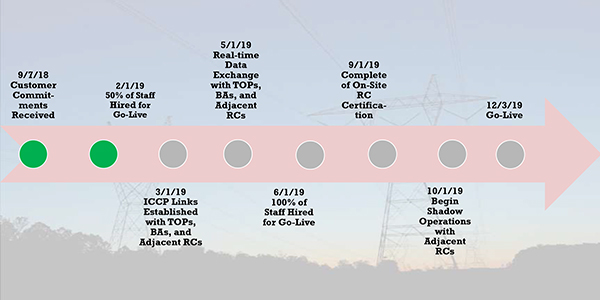By Tom Kleckner
SPP Vice President of Operations Bruce Rew last week said that he “feels pretty confident” the RTO will meet its first major target in providing reliability coordination services to 12% of the Western Interconnection’s load.
During a Wednesday meeting of the Western Reliability Executive Committee (WREC) in Tucson, Ariz., Rew said SPP is “doing well” in preparing for the certification process, which begins with the Western Electricity Coordinating Council’s on-site certification visit Aug. 13.
Rew said staff are updating and creating new procedures to include the Western footprint. He told the WREC the procedures will not be shared with customers, but a summary of methodologies will be provided.
SPP is updating and validating its system model, using Peak Reliability’s as a benchmark. Peak has provided RC services in WECC since 2011 but it will wind down operations at the end of the year.
SPP and CAISO RC Wins Most of the West.)
SPP staff are also working with the RTO’s Congestion Management and Seams Task Force to identify a “consistent and agreed-upon” congestion management approach between SPP West transmission owners and balancing authorities. The approach includes a redispatch methodology for congestion within the SPP West RC.
SPP is scheduled to go live with its RC services Dec. 3. It announced in September it had signed RC contracts with more than a dozen Western entities.
The WREC met following a two-day meeting by the Western Reliability Working Group, which spent much of its time discussing SPP’s communications processes, coordination among reserve sharing groups and emergency operations preparedness.
SPP staff encouraged new members to sign up for NERC’s GridEx V on Nov. 13 and 14, in which the RTO will participate as a player. Staff said more than 200 employees, including senior officers, will participate in the biennial exercise, which tests response to and recovery from simulated cyber and physical attacks. GridEx IV, in 2017, had more than 6,500 participants from 450 organizations.





